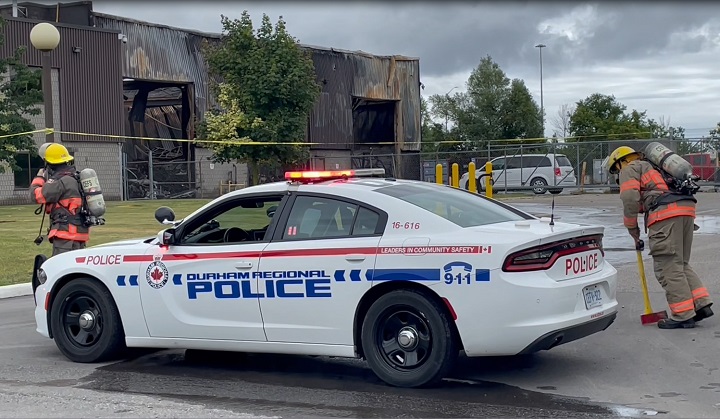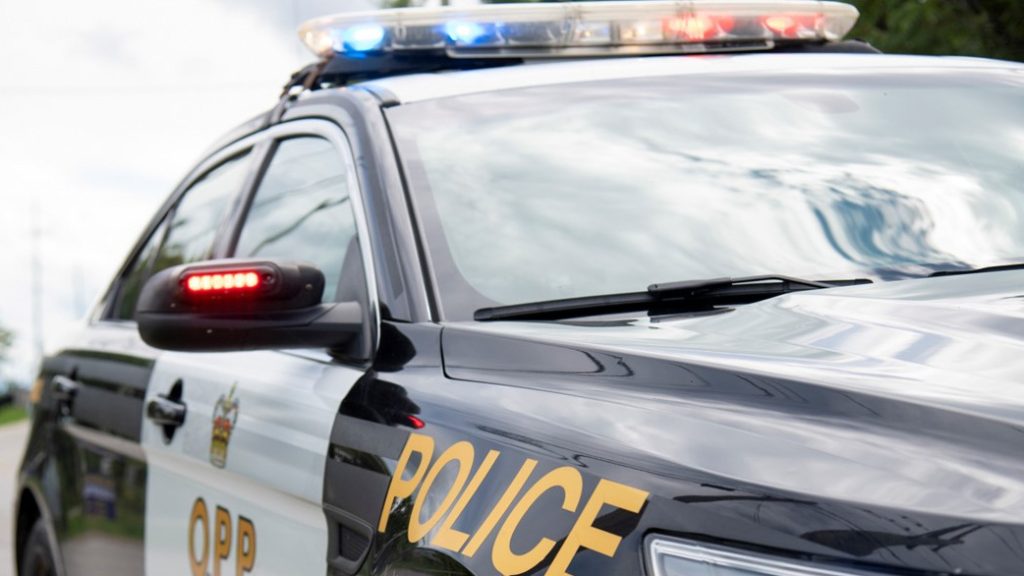Still unknown if evidence at Durham police facility destroyed by fire has been damaged

Posted July 29, 2022 4:51 pm.
Durham Regional Police officers say they still haven’t been able to get into the building housing emergency vehicles and evidence that was destroyed by fire amid questions about how it could potentially impact court cases.
In an update released Friday afternoon, officers said investigators with Ontario’s Office of the Fire Marshal finished the on-site portion of their probe and so far it hasn’t been deemed suspicious.
However, since there was heavy damage to the building, officers said it was not stable in order for crews to get inside to assess the impact of the fire. They added it will likely take three or four weeks for the building to be shored up.
The statement said officers continue “to work with our Crown prosecutors in relation to any physical evidence for upcoming court cases.”
“We want to assure the public that while this has been a challenge to the Service, it has not impacted our ability to provide policing services to our community,” the statement said.
It was on the evening of July 17 when the property unit, located on Courtice Court near Highways 418 and 401, caught on fire. Several Durham Regional Police vehicles were damaged.
The fire at the building raised questions about the potential loss of evidence. It’s not clear what exactly was stored in the building, but a spokesperson recently told CityNews there were firewalls inside it. However, they said at the time the building wasn’t stabilized in order to examine the damage.
RELATED: Clarington fire crews still working to put out fire at Durham police property unit building
CityNews recently spoke with Benjamin Berger, a professor with Osgoode Hall Law School at York University and the York Research Chair in Pluralism and Public Law, generically about the storage of evidence by police services and not the specifics involving the Durham Regional Police property unit.
When it comes to presenting and preserving evidence, Berger said it all falls to the nature of the evidence, what’s been done with it and issues being considered in the case.
“It’s not necessarily the case that lost evidence would produce a problem in securing a conviction, but it very well could be if that evidence is contested or there are questions about its use or it needs to be further tested or available for testing — those sorts of issues could produce substantial questions,” he said, adding it’s hard to predict based on the limited information available.
“We really wouldn’t know unless you were able to know what the evidence was that was damaged or lost and how it fit into a particular case, but it’s foreseeable that it could produce issues in cases.”
Using a hypothetical example of “real” evidence (objects such as clothing) that hasn’t received forensic analysis of some type and there are questions about interference, contamination and/or unintended disruption of it, Berger said it could be a problem especially when it comes to testimony in court.
But he said it would turn on the nature of the evidence, what the issues were and what the state of the evidence would be.
“Any cases that involve defence counsel where evidence was compromised in some form would obviously be of great interest to the defence lawyers and the accused involved,” Berger said, reiterating every case is different and the use of it would rely on the particulars of the situation.








